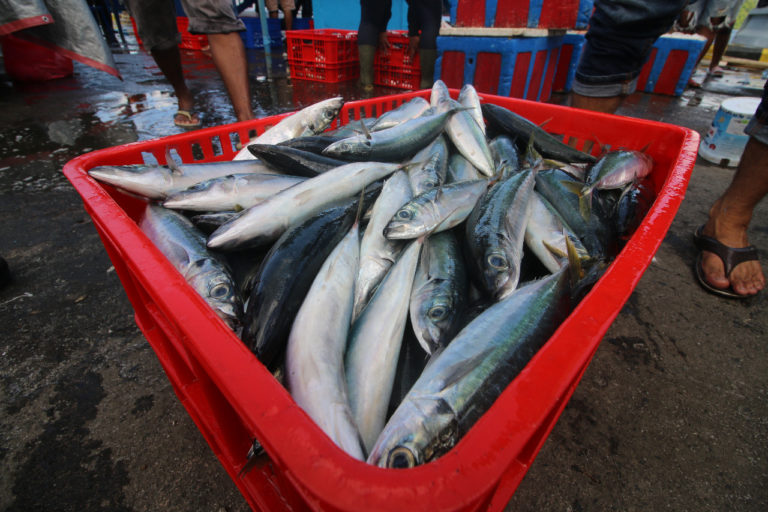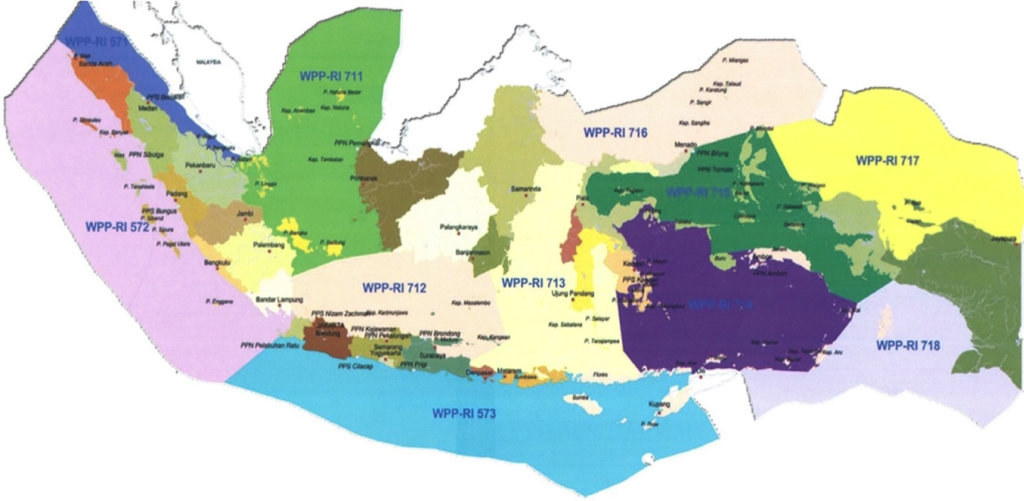
- The latest official fish stock estimates by the Indonesian government showed a decline from five years ago.
- The data also show more fishing zones in the Southeast Asian country’s waters are being fully exploited and require more protection.
- However, the fisheries ministry has pushed for increased productivity through, among other initiatives, allowing foreign-funded fishing vessels back into its waters.
- Indonesia is the second-biggest marine capture producer in the world, after China.
JAKARTA — Indonesia’s fish stock has declined in the past five years as more of the country’s waters are now fully exploited, according to new government data.
The latest data released by the fisheries ministry earlier this month put Indonesia’s estimated fish stock at 12 million metric tons, down almost 4% from the 12.5 million metric tons estimated in 2017. The data also showed that 53% of the country’s 11 fisheries management areas, known as WPPs, were now deemed “fully exploited,” indicating that more stringent monitoring is required, up from 44% in 2017.
Marine observers say the figures are cause for concerns, especially in light of the fisheries ministry’s plan to increase production at a time when more of the fisheries areas are already fully exploited.
One major plan by the ministry is to reopen the country’s fishing grounds to vessels funded by foreign investors, which were previously blamed for depleting fish stocks over the course of several years. The ministry also aims to designate some areas for fishing industry, and others for nursery grounds.
“What’s needed now is more control on capturing and exploiting fish instead of increasing production,” said Mohammad Abdi Suhufan, national coordinator for the NGO Destructive Fishing Watch (DFW) Indonesia.

Indonesia is the second-biggest marine capture producer, after China, harvesting 84.4 million metric tons of seafood in 2018, according to the U.N.’s Food and Agriculture Organization (FAO). The country’s waters support some of the highest levels of marine biodiversity in the world, and the fisheries industry employs about 12 million Indonesians.
The government has worked for several years to boost fish stocks, primarily under former fisheries minister Susi Pudjiastuti, who was in office from 2014 to 2019. By 2018, official estimates for the country’s total fish stocks showed a 5% increase from the previous two years, which fisheries experts attributed largely to Susi’s efforts to keep illegal foreign fishing boats out of the country’s waters.

According to a government-funded body, the decline shown in the latest data set doesn’t reflect an actual decline in fish stocks, but rather an improvement in the assessment methodology.
“I don’t see that our stock declined,” said Indra Jaya, head of the National Commission for Fisheries Resources Research (Komnas Kajiskan).
He also said fishing pressure on fish stocks was lower in recent years.
“I’m optimistic that, compared to five years ago, now is better. Our job is to ensure that the stock for next year and the following year is still there and can be caught,” he added.
The fish stock health analysis helps the fisheries ministry decide fishing zones allowed for large-scale and traditional fishing, and which areas to protect for conservation due to overfishing. The data also inform harvest quotas for each type of fish, the number of boats and the kinds of gear allowed to operate in each fishing zone.

FEEDBACK: Use this form to send a message to the author of this post. If you want to post a public comment, you can do that at the bottom of the page.
Data show decline in Indonesian fish stocks amid push for higher productivity
Source: Trends News

0 Comments